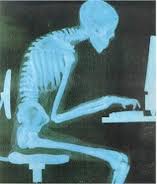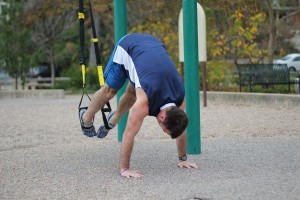massage and bodywork professionals
a community of practitioners
How did we get here? The human body is awe-inspiring. It is capable of moving with speed, power, agility, stamina, and grace — in an amazingly wide range of motions. It is also capable of adapting to the demands that are placed upon it. Unfortunately, most of us no longer move the way our body was designed to move. We weren’t trained to. The training grounds that once shaped The Human Body no longer exist. What we have instead are cars, couches, computers and ergonomic chairs. These are the new “training grounds” and our body has adapted to them well. For many, it has adapted too well.
The human body is awe-inspiring. It is capable of moving with speed, power, agility, stamina, and grace — in an amazingly wide range of motions. It is also capable of adapting to the demands that are placed upon it. Unfortunately, most of us no longer move the way our body was designed to move. We weren’t trained to. The training grounds that once shaped The Human Body no longer exist. What we have instead are cars, couches, computers and ergonomic chairs. These are the new “training grounds” and our body has adapted to them well. For many, it has adapted too well.
In this training we sit for long hours each day. We do not utilize movement that engages our postural system the way it was designed to be engaged. Over time, these muscles become weak. They atrophy. They fall asleep and quit functioning. They no longer provide the essential stabilization that is so important to movement. In time, our body adapts to this new environment and develops bad habits. The most prominent example is the recruitment of mobile muscles to provide stability. Let’s revisit the analogy of driving your car with the brakes and the gas pedals pressed down at the same time. How well would your car move? Not well at all. Driving like this is extremely damaging to the car. The same is true for your body. The pain you feel in your body is the indicator light telling you “stop driving and visit a mechanic.” A mechanic in this sense would be a “body” mechanic, a deep tissue massage therapist, postural movement coach, or physical therapist. I recommend somebody with advanced knowledge and experience with the fascial system and how it relates to pain.
What is next?
Before you can sit up straight or intentionally hold your body “in good posture,” you must re-teach your body to stabilize, but how is this accomplished?
You have heard the phrase, “stand up straight and pull your shoulders back.” For most of us this is our cue to establish “good” posture. There is something inherently wrong with this method and it lies in a concept that we have conscious control over our posture, when in fact we do not.
Regardless of this natural ability, we are taught to think or be mindful about our posture. We are told to hold our heads up, have our shoulders pulled down and back, and our abs pulled in tight. But since we do not have conscious control over our postural muscles, the act of consciously engaging our muscles to provide postural support activates the mobile muscles that we do have conscious control over. Over time, these movement muscles become neurologically trained to function as stabilizing postural muscles. This is not what they were designed to do. As our movement muscles are re-programed to provide postural stability, they become less efficient at providing movement. All this happens and our postural muscles remain inept. The result is the significant loss of range of motion which will lead to dysfunction, pain and injury…
Compared to five or ten years ago, how well can you fully open up your hips and chest; reach your hand behind your back as if to scratch an itch between your shoulder blades with both hands; or bend over at the waist to touch your toes?

Pain
If you are currently suffering from acute or chronic pain, the first step is to treat the pain. Pain prevents or changes movement. There is no such thing as healthy movement with pain. Pain is the signal that something is wrong and you need to see that mechanic.
What does this mean? It means you have to stop thinking and move. Your body needs to be retrained to move healthy. It means, on a regular basis, moving your body the way it is designed to move, every muscle, every joint, with full range of motion, in every direction, at all speeds, performed with agility, power and grace. You don’t want movement where you have to think about your posture. You must challenge and train your body to once again think for itself.
It means you have to stop thinking and move. Your body needs to be retrained to move healthy. It means, on a regular basis, moving your body the way it is designed to move, every muscle, every joint, with full range of motion, in every direction, at all speeds, performed with agility, power and grace. You don’t want movement where you have to think about your posture. You must challenge and train your body to once again think for itself.
Views: 107
Comment
© 2025 Created by ABMP.
Powered by
![]()
You need to be a member of massage and bodywork professionals to add comments!
Join massage and bodywork professionals